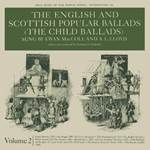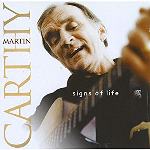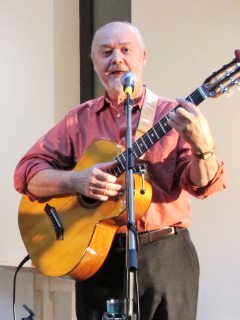
»The English and Scottish Popular
Ballads (The Child Ballads) Vol. II«

Songs That Made History: The English and Scottish Ballads by Francis James Child had been originally published in eight volumes in 1860 and reprinted in multiple editions since. Sir Patrick Spens has been one of the most popular ballads, recently recorded by Danish group Basco and unearthed from Peter Bellamy's Maritime England Suite.
"Sir Patrick Spens" is one of the most popular of the Child Ballads (No. 58) (Roud 41), and is of Scottish origin. It is a maritime ballad about a disaster at sea.
Sir Patrick Spens remains one of the most anthologized of British popular ballads, partly because it exemplifies the traditional ballad form. The strength of this ballad, its emotional force, lies in its unadorned narrative which progresses rapidly to a tragic end that has been fore-shadowed almost from the beginning. It was first published in eleven stanzas in 1765 in Bishop Thomas Percy's Reliques of Ancient English Poetry, based on "two MS. copies transmitted from Scotland".
The story as told in the ballad has multiple versions, but they all follow the same basic plot. The King of Scotland has called for the greatest sailor in the land to command a ship for a royal errand. The name "Sir Patrick Spens" is mentioned by a courtier, and the king despatches a letter. Sir Patrick is dismayed at being commanded to put to sea in the dead of winter, clearly realising this voyage could well be his last.
Versions differ somewhat at this point. Some indicate that a storm sank the ship in the initial crossing, thus ending the ballad at this point, while many have Sir Patrick safely reaching Norway. In Norway tension arises between the Norwegian lords and the Scots, who are accused of being a financial burden on the king. Sir Patrick, taking offence, leaves the following day. Nearly all versions, whether they have the wreck on the outward voyage or the return, relate the bad omen of seeing "the new mune late yestreen, with the auld mune in her airms", and modern science agrees the tides would be at maximum force at that time. The winter storms have the best of the great sailor, sending him and the Scottish lords to the bottom of the sea.
Francis James Child collected some eighteen versions of Sir Patrick Spens. There is no one definitive version of more validity than any other, because the song continues in oral tradition and it may be interpreted in both the singing and the transcription. This is one version:
"Sir Patrick Spens"
The king sits in Dunfermline toune
drinking the blude reid wine,
"O whar can I get skeely skipper,
To sail this ship o' mine?"
Up and spak an eldern knicht,
Sat at the kings richt kne:
"Sir Patrick Spens is the best sailor
That sails upon the se."
The king has written a braid letter,
And signed it wi his hand,
And sent it to Sir Patrick Spens,
Was walking on the strand.
To Noroway! to Noroway!
to Noroway oer the faem!
The king's daughter to Noroway
'Tis thou maun bring her hame.
The first line that Sir Patrick red,
A loud lauch lauched he;
The next line that Sir Patrick red,
A teir blinded his ee.
"O wha is this has don this deid,
This ill deid don to me,
To send me out this time o' yeir,
To sail upon the se!
"Mak haste, mak haste, my mirry men,
Our guid ship sails the morne":
"O say na sae, my master deir,
I feir a deadlie storme.
"Yestreen I saw the new moone,
Wi the auld moone in her arme,
And I feir, I feir, my master deir,
That we will cum to harme."
O loth, o loth,
The Scots lords were
To weet their cork-heild schoone;
Bot lang owre a' the play wer playd,
Thair hats they swam aboone.
O lang, lang may the ladies sit,
Wi' their fans into their hand
Or ere they see Sir Patrick Spens
Come sailing to the strand.
O lang, lang may the ladies stand,
Wi thair gold kems in their hair,
Waiting for thair ain deir lords,
For they'll se thame na mair.
Haf owre, haf owre to Aberdour,
Tis fiftie fathom deip,
And thair lies guid Sir Patrick Spens,
The Scots lords at his feit.






The story itself is simple and yet universal in its theme: the courageous knight dutifully obeys the command of his king despite the knowledge that he will almost certainly be going to his death. In the two stanza exchange between Spens and the old sailor, Mark Strand and Eavan Boland have noted "the immediacy, music, and fatalism of the ballad..."
William Bowman Piper identifies a pattern of contrasts between authority, represented by the anonymous king, and nobility, as displayed by Patrick Spens. The references to the women awaiting the arrival of their men describe an experience common to any dangerous enterprise in peacetime or in war, and as old as the Bible.
William H. Matchett considers the ballad probably to be fiction.
The events of the ballad are similar to, and may chronicle, an actual event:
The opening lines refer to a king who is located in Dunfermline where historically there was a royal residence, Malcolm's Tower.
Earl's Knowle on Papa Stronsay is traditionally thought to be the final resting place of Sir Patrick Spens. The history relating to the burial of Sir Patrick Spens on Earl’s Knowle on Papa Stronsay is related by William Edmonstoune Aytoun (b. Edinburgh 21 June 1813, d. 4 August 1865), Sheriff and Lord Admiral of Orkney and Shetland. It was after his retirement from this position that he edited a collection of Scottish poetry in which the first poem is Sir Patrick Spens. In his foreword to the poem Aytoun, he writes:

Listen to Sir Patrick Spens from: Peter Bellamy, Basco, Martin Carthy, Kris Drever, Jim Malcolm, Jim Malcolm (Live), Anais Mitchell & Jefferson Hamer, Martin Simpson, June Tabor
Watch Sir Patrick Spens from: Basco, Martin Carthy, Conor Doherty, Fairport Convention, Jesse Ferguson, Nic Jones, Ewan MacColl, Anais Mitchell & Jefferson Hamer, Matthew Ord, Martin Simpson





Text is available under the Creative Commons Attribution-ShareAlike License.
Date: October 2018.
Photo Credits:
(1) 'The English and Scottish Popular Ballads (The Child Ballads)',
(2) Basco,
(3) Nic Jones,
(4) Peter Bellamy,
(5) Martin Carthy,
(6) Hector Gilchrist
(unknown/website);
(7) 'Sir Patrick Spens'
(by ABC Notations).